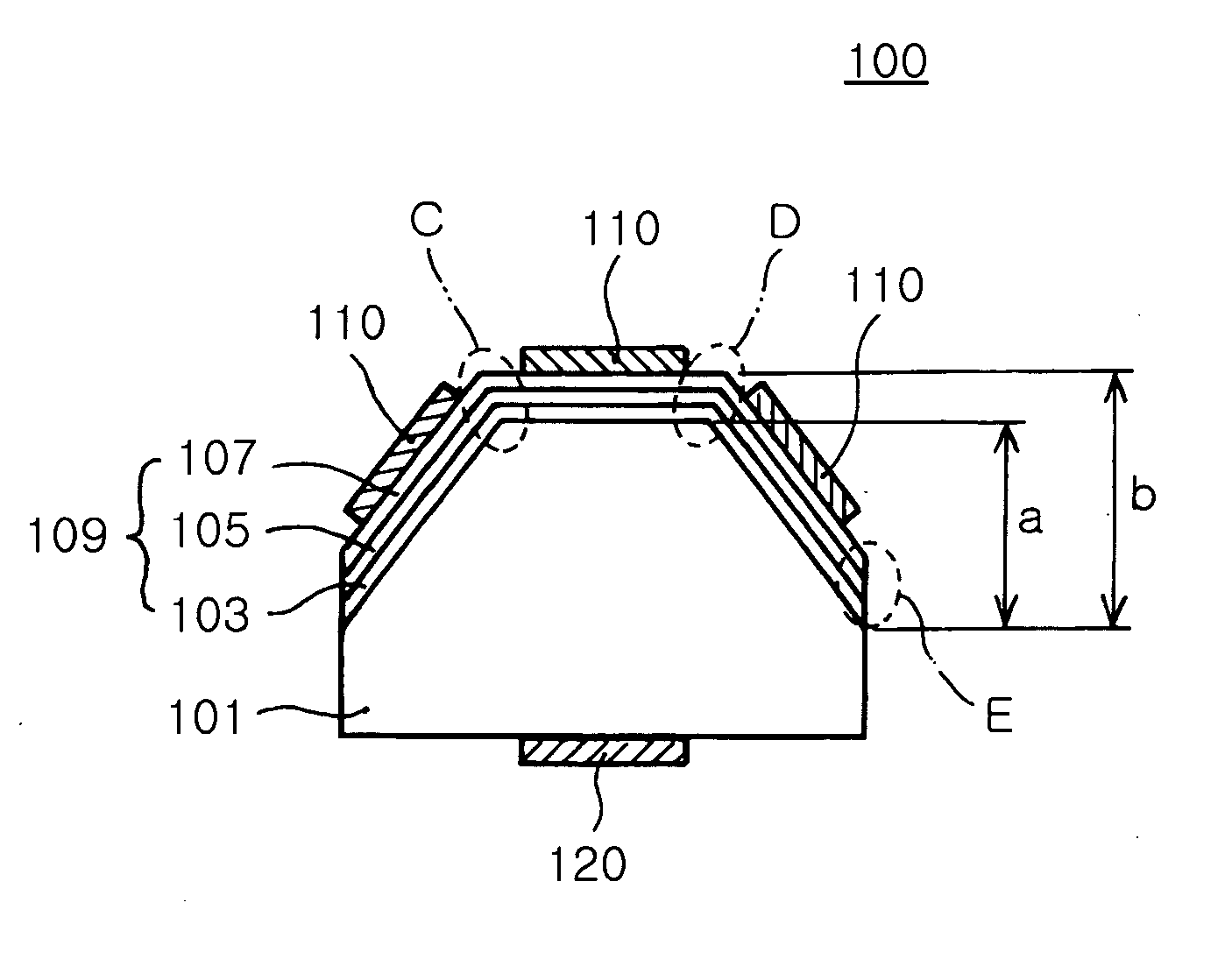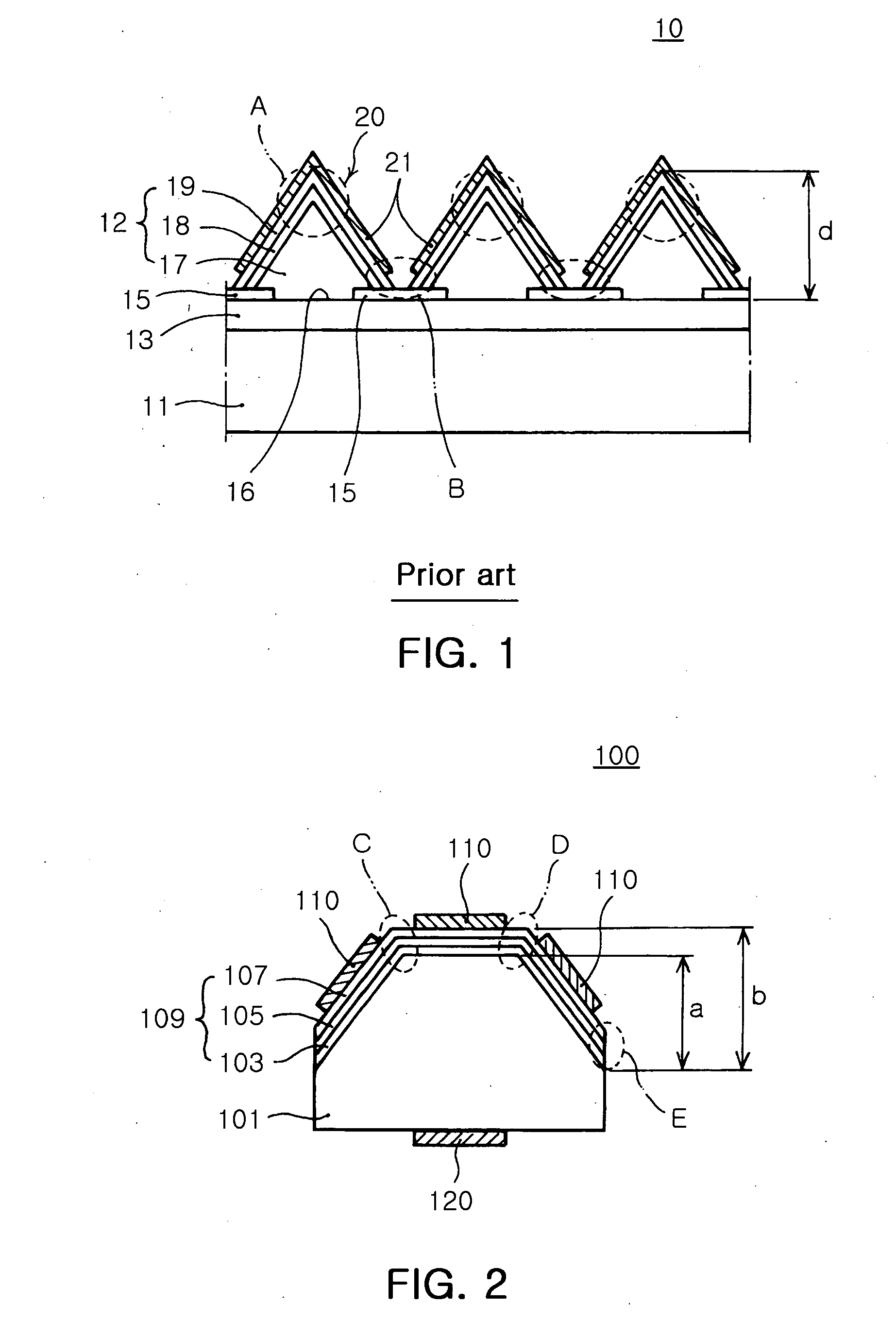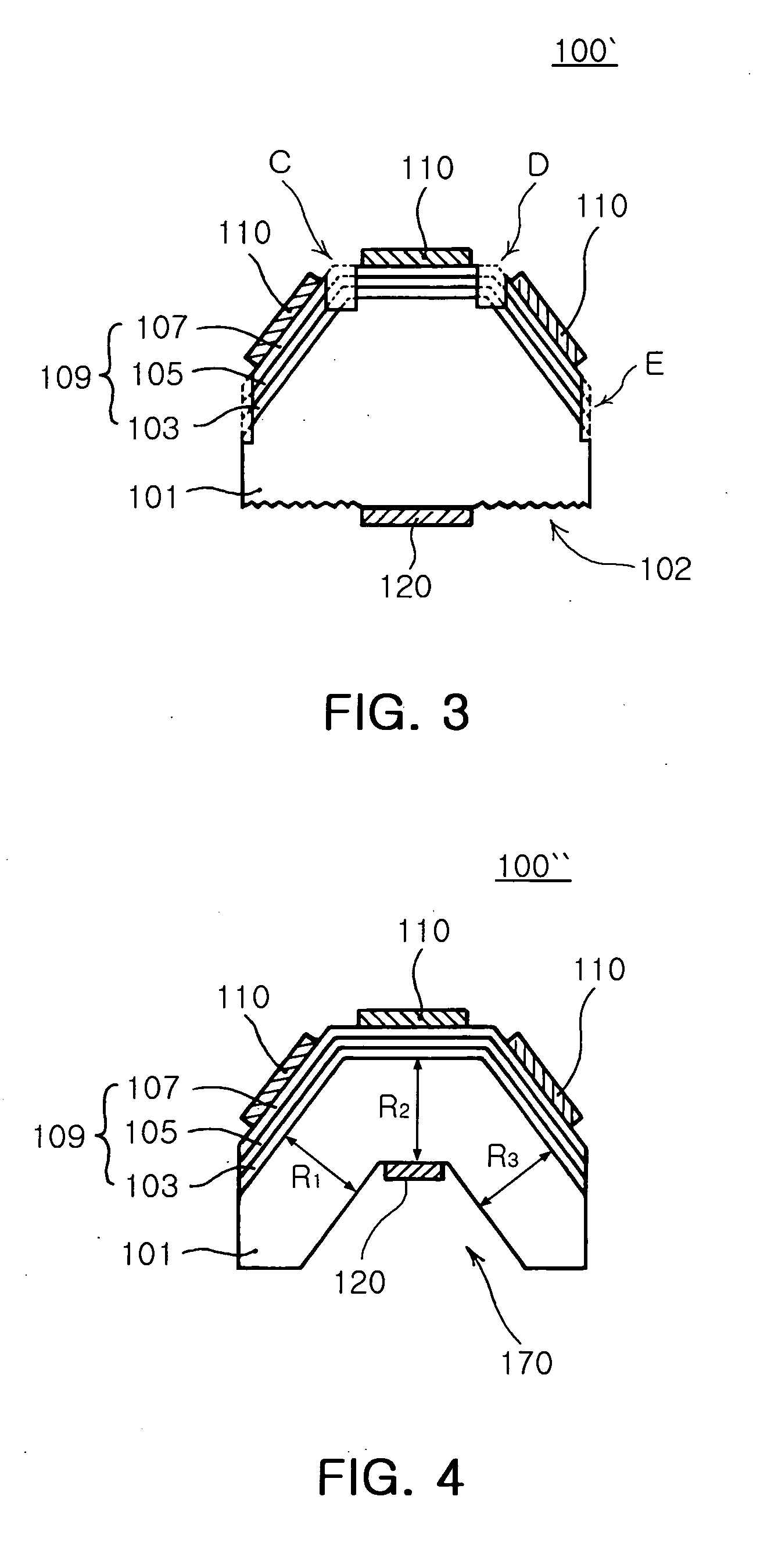Semiconductor light emitting diode and method for manufacturing the same
- Summary
- Abstract
- Description
- Claims
- Application Information
AI Technical Summary
Benefits of technology
Problems solved by technology
Method used
Image
Examples
second embodiment
[0051]FIG. 3 is a sectional view of a semiconductor LED according to the present invention. In the semiconductor LED 100′ of FIG. 3, edges C, D and E of a three-dimensional light-emitting stack structure are removed using an etching process. By removing the edges C, D and E, a large amount of crystal defect existing in the edges is also removed. Thus, the bad effect caused by the crystal defect can be reduced or suppressed. A passivation layer (150 in FIG. 12) may be formed at the regions where the edges C, D and E are removed. The passivation layer may be formed of insulating material such as SiO2. The passivation layer can prevent the p-electrode 110 and the active layer 105 from being directly contacted with each other and can interrupt a undesired current flowing through the edges C, D and E.
[0052]The GaN-based substrate 101 may have an uneven bottom surface 102, which is a light exit surface. The uneven bottom surface 102 provides a roughness. The uneven bottom surface 102 redu...
third embodiment
[0053]FIG. 4 is a sectional view of a semiconductor LED according to the present invention. In the semiconductor LED 100″ of FIG. 4, a groove 170 is formed in a bottom surface of a substrate 101. The groove 170 reduces a deviation of thickness R1, R2 and R3 of the substrate 101. Because a deviation of current paths passing through the substrate 101 is reduced, the current can flow more uniformly. Consequently, the operating voltage is lowered and a local concentration of the current density can be prevented. That is, the groove 170 formed in the bottom surface of the substrate 101 functions to accelerate a current diffusion. The semiconductor LED 100″ also has the above-described advantages.
[0054]FIG. 5 is a sectional view of a semiconductor LED according to a fourth embodiment of the present invention. Referring to FIG. 5, a groove 170 is formed in a bottom surface of a substrate 101 so as to reduce a thickness deviation of the substrate 101. Also, the substrate 101 has an uneven b...
first embodiment
[0061]FIGS. 7 to 12 are sectional views illustrating a method for manufacturing a semiconductor LED according to the present invention.
[0062]Referring to FIG. 7, a GaN-based substrate 101 is prepared. Instead of the GaN-based substrate, other conductive substrates such as a SiC substrate may be used. It is preferable that the conductive substrate has a thickness of more than 50 μm. Referring to FIG. 8, the GaN-based substrate 101 is processed such that its top surface has a plurality of three-dimensional shapes. For example, a plurality of trapezoidal pyramid structures may be formed on the top surface of the substrate 101 by sawing the substrate 101 using a wheel, or scribing the substrate 101 using a diamond pencil.
[0063]It is preferable that the substrate is processed to have the three-dimensional shape of 10-100 μm in size. Also, it is preferable that the top surface of the processed substrate has at least one of c-plane, a-plane, n-plane. The reason for this is that the nitride...
PUM
 Login to View More
Login to View More Abstract
Description
Claims
Application Information
 Login to View More
Login to View More - R&D
- Intellectual Property
- Life Sciences
- Materials
- Tech Scout
- Unparalleled Data Quality
- Higher Quality Content
- 60% Fewer Hallucinations
Browse by: Latest US Patents, China's latest patents, Technical Efficacy Thesaurus, Application Domain, Technology Topic, Popular Technical Reports.
© 2025 PatSnap. All rights reserved.Legal|Privacy policy|Modern Slavery Act Transparency Statement|Sitemap|About US| Contact US: help@patsnap.com



